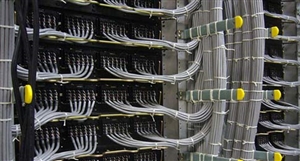Introduces Storage Foundation 6.1 which it says 400 percent faster than traditional Storage Area Networks
Symantec has launched a new version of its Storage Foundation software, enabling data centers to leverage Solid State Drives (SSDs) in ways that could allow customers to access mission critical data and applications, 400 percent faster than traditional Storage Area Networks (SANs).
Storage Foundation 6.1 functionalities and benefits include vendor-agnostic intuitive caching layer, enabled by Symantec’s SmartIO technology and Flexible Storage Sharing (FSS) technology. SmartIO detects critical application workloads and caches only the hot data on local SSDs, which could result in up to 400 percent improved performance over traditional secondary storage.
Flexible Storage Sharing (FSS) technology enables servers to access remote data as if it were from local storage. This allows organizations to reduce storage costs by up to 80 percent using commoditized storage hardware, while helping to ensure that all data is replicated, protected, and available.
Joel Reich, SVP and GM, NetApp, said, “Symantec and NetApp are long term partners with a history of delivering innovative solutions to solve customers’ most pressing data management challenges. The combined strengths of NetApp storage and the new Storage Foundation 6.1 software helps our mutual customers ease the adoption of new storage technologies such as flash while improving efficiency, performance and simplified management of business critical applications like Oracle, SAP and Microsoft Exchange.”
Ashish Nadkarni, research director, Storage Systems, IDC, said, “Symantec’s latest offering is designed to help customers leverage the next generation of storage. In today’s information-centric world, businesses want both increased performance and cost savings – and it doesn’t make fiscal sense to rip and replace existing storage to deploy new technologies like flash. However, with Storage Foundation 6.1, customers can ease into the adoption of new technologies, while mixing and matching high-end solutions with traditional hardware, without sacrificing existing service levels.”


